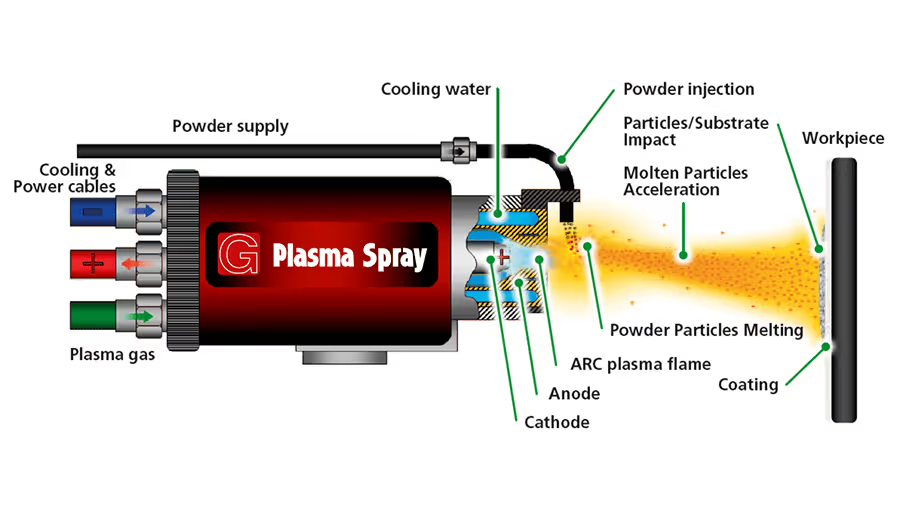
Plasma Spraying
Plasma spraying is particularly suitable for materials with a high melting point such as ceramic materials.
Highlight
Benefits
- Fine micro structure
- Low porosity
- Excellent corrosion resistance
- High process flexibility
- Good tensile strength
- Versatile and comprehensive range of materials
- High production capacity with low costs
Applications
- Hydraulic piston rods, as protection against sea-water environment
- Ceramics for sealing moving surfaces to prevent seals from leaking
- Repairs or dimension corrections of worn drive shafts or bearing seatings
- Thermal barrier coatings (TBCs) in gas turbines
Overview
In a plasma spray gun a plasma gas is ionized between an anode and a cathode. The plasma reaches temperatures between 15,000 and 20,000°C. A coating powder is injected into the plasma jet by a carrier gas, where it melts before depositing on the substrate, the object requiring the coating. The powder particles fuse together on the substrate forming a protective coating.
Because of the high temperature it is possible to spray virtually all existing materials and alloys. Plasma spraying is particularly suitable for materials with a high melting point such as ceramic materials.
Typical coatings
- Ceramic materials (oxides)
- Cermets, Carbides (hard metals)
- Metals and alloys
- Almost all sprayable materials
Plasma Spraying
is used to apply
TOPCOAT
Economic, reliable, versatile ceramic coating for general hydraulic and industrial use – since 1987.
TOPCOAT+
Enhanced ceramic coating with superior corrosion and chemical resistance.
TOPCOAT ULTRA
This ceramic coating is mainly used to withstand severe chemical and corrosive environments.
Request we contact you
Request Quotation
Product data sheets

Get access to our download center
Get access